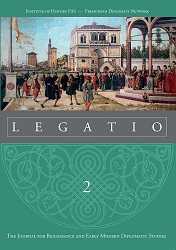Reforming Female Convents: The Role of a Venetian Ambassador in Curia (1519)
Reforming Female Convents: The Role of a Venetian Ambassador in Curia (1519)
Author(s): Elisa ClodelliSubject(s): Christian Theology and Religion, Diplomatic history, Political history, Gender history, International relations/trade, Politics and religion, 16th Century
Published by: Instytut Historii im. Tadeusza Manteuffla Polskiej Akademii Nauk
Keywords: Venice; female monasteries; diplomatic mission; Venetian patriarch; discipline;
Summary/Abstract: In 1519, Patriarch Antonio Contarini (1508–24) was trying to impose his authority over the female monasteries in Venice. He wanted to impose a stricter discipline and a more rigid lifestyle to the nuns, who were accustomed to comforts. However, he soon found major impediments from many Venetian families. The majority of nuns had aristocratic origins, and their relatives did not want them to lose their ancient privileges. Besides, monasteries symbolised the honour of the city and their families, so many noblemen reacted against any changes. After complaints began to spread, the government decided to get in touch with its ambassador in Rome, Marco Minio. Minio was asked to intercede with the pope: the Republic wanted a papal approval of Contarini’s reformation to end the dispute. In the present paper, Minio’s correspondence on this subject is analysed to trace the process developed in June–August of 1519. The Venetian ambassador tried to balance words and a decision to appease both the Republic and the Holy See. The case study is indeed an example of clever procrastination which eventually made it possible for Venice to accomplish its goal.
Journal: Legatio: The Journal for Renaissance and Early Modern Diplomatic Studies
- Issue Year: 2018
- Issue No: 2
- Page Range: 93-110
- Page Count: 18
- Language: English

